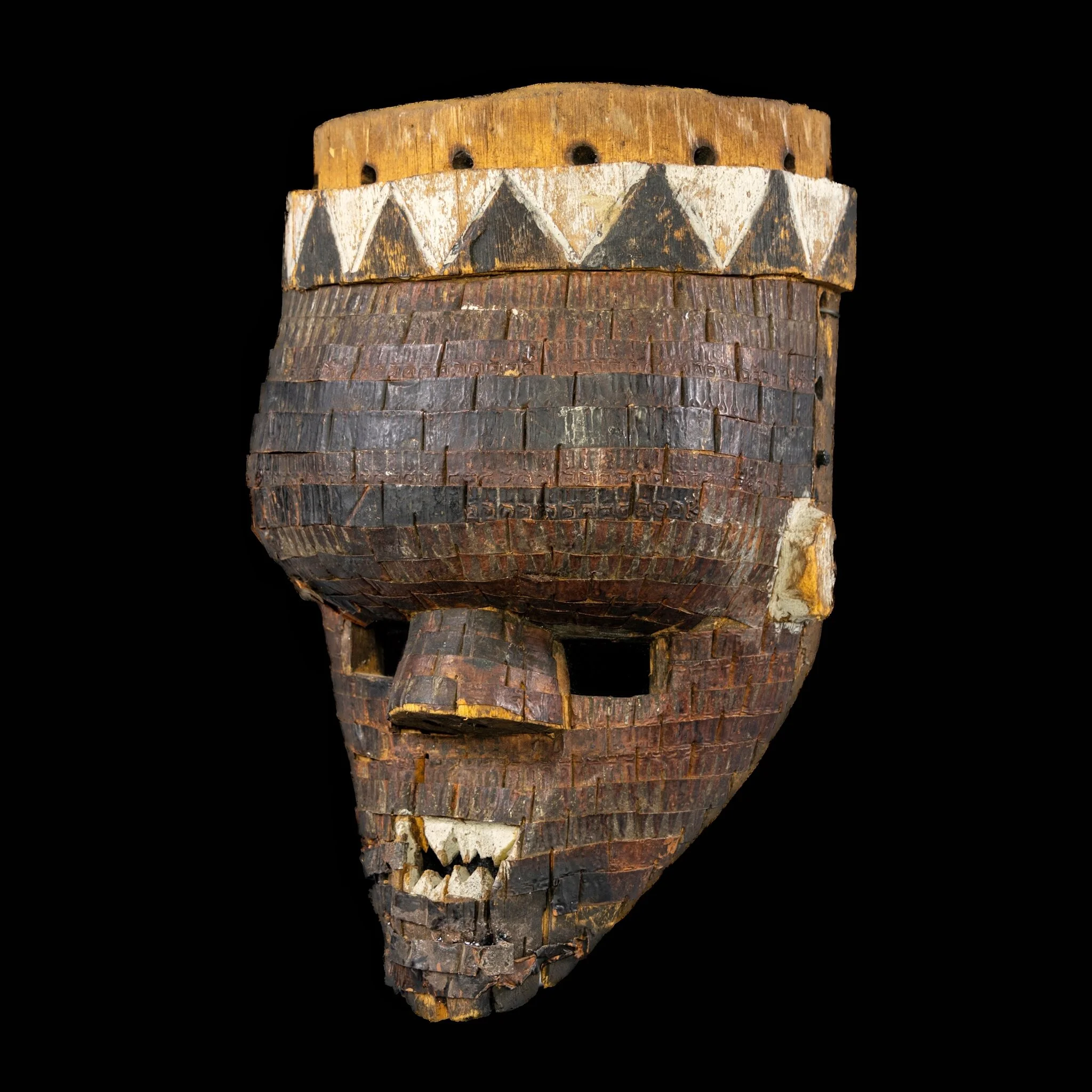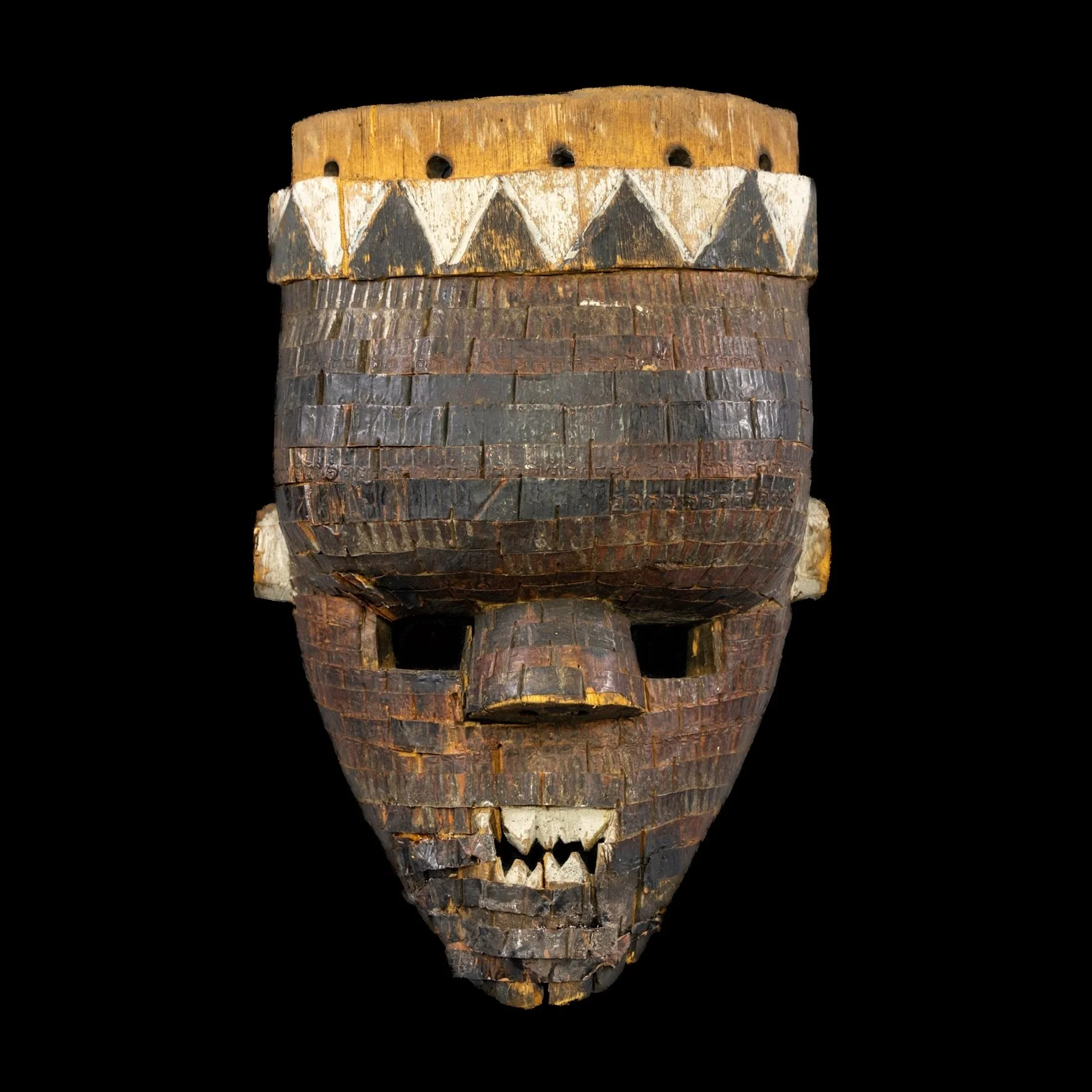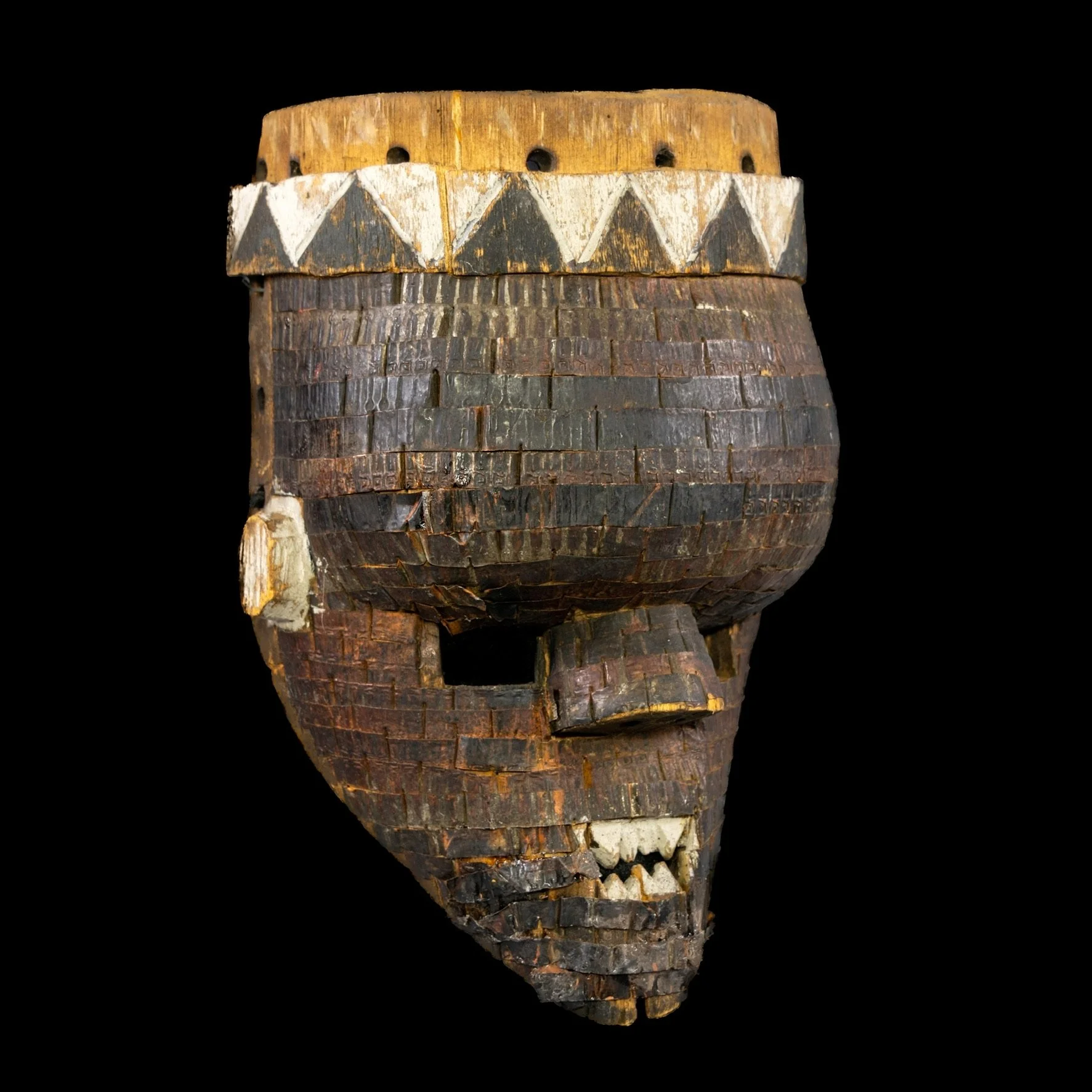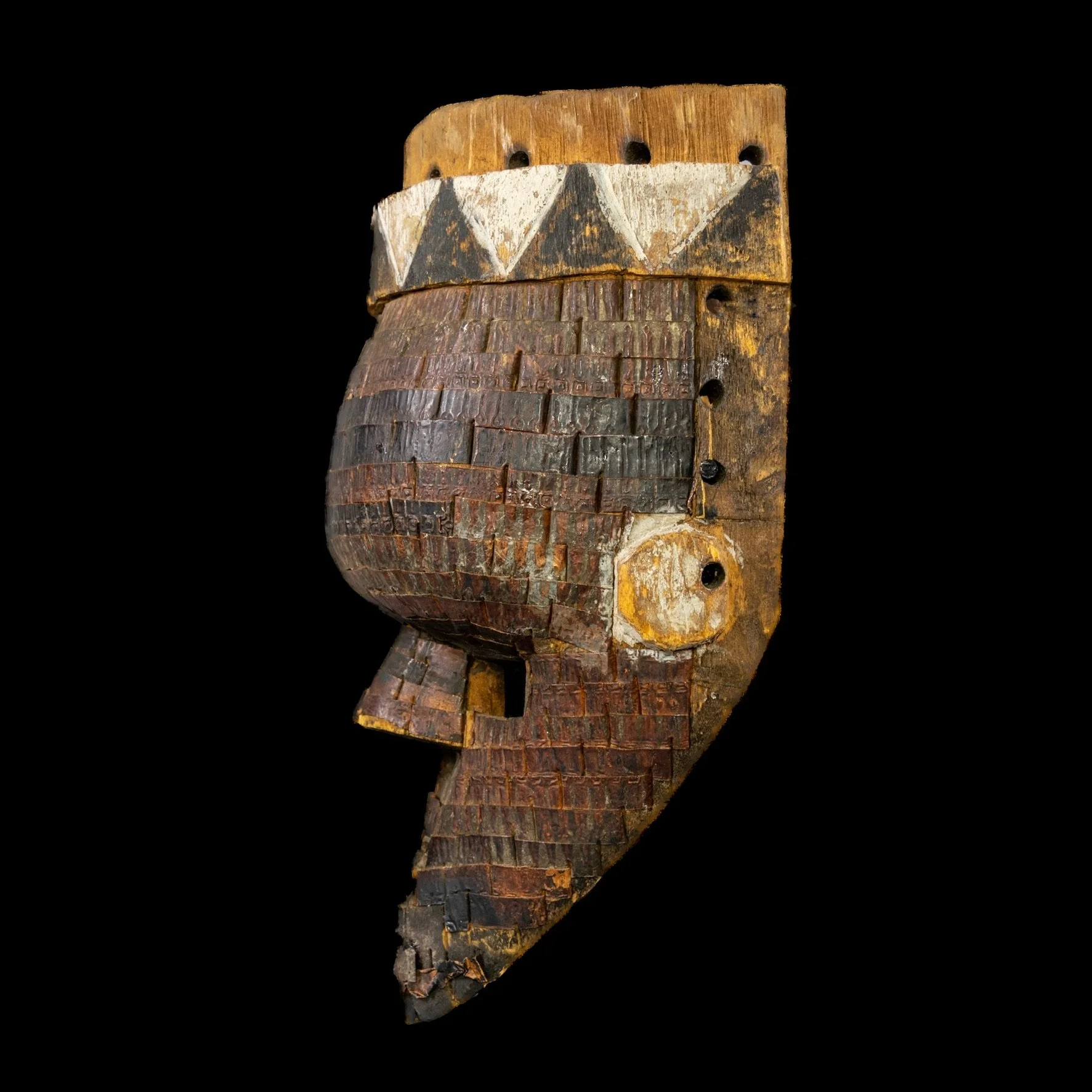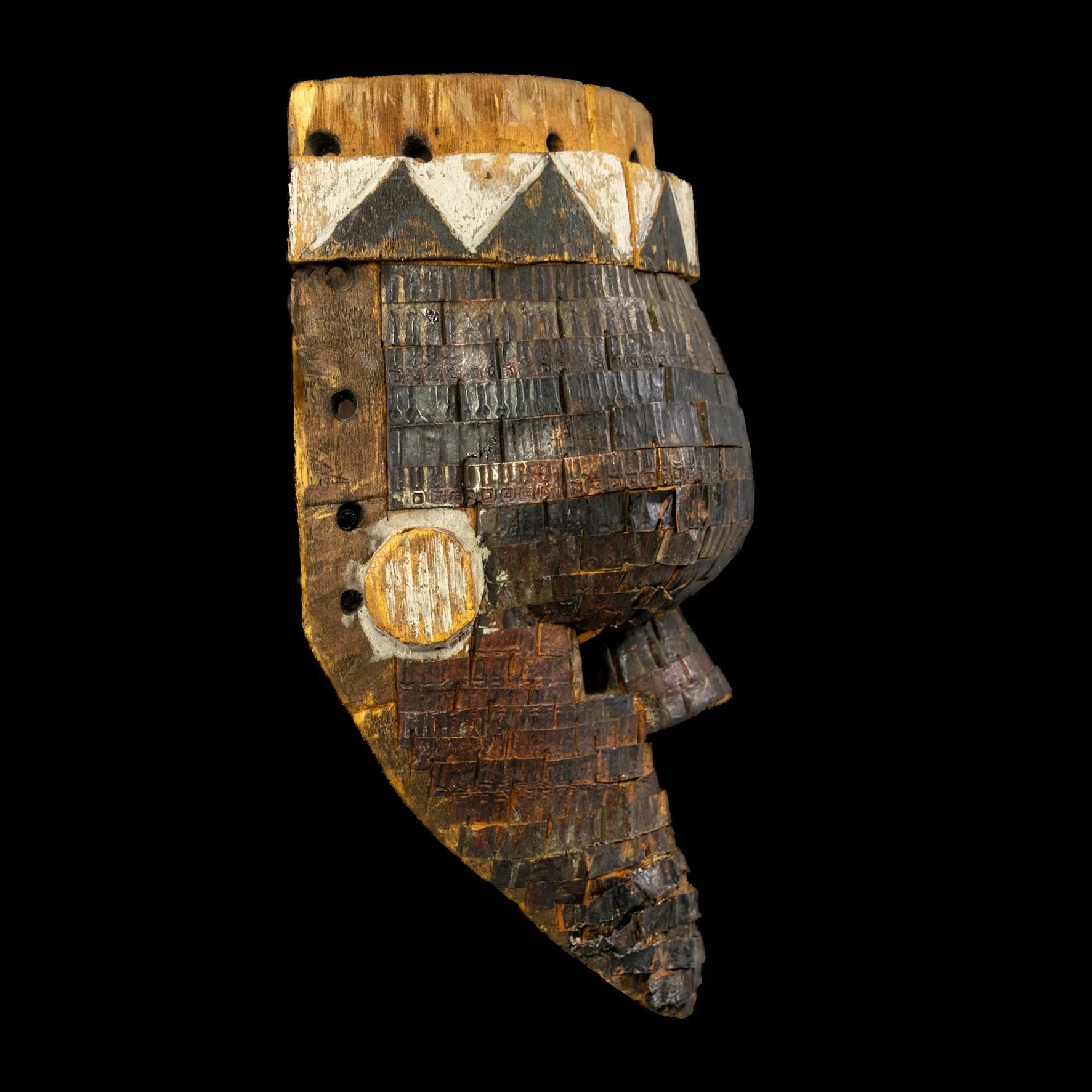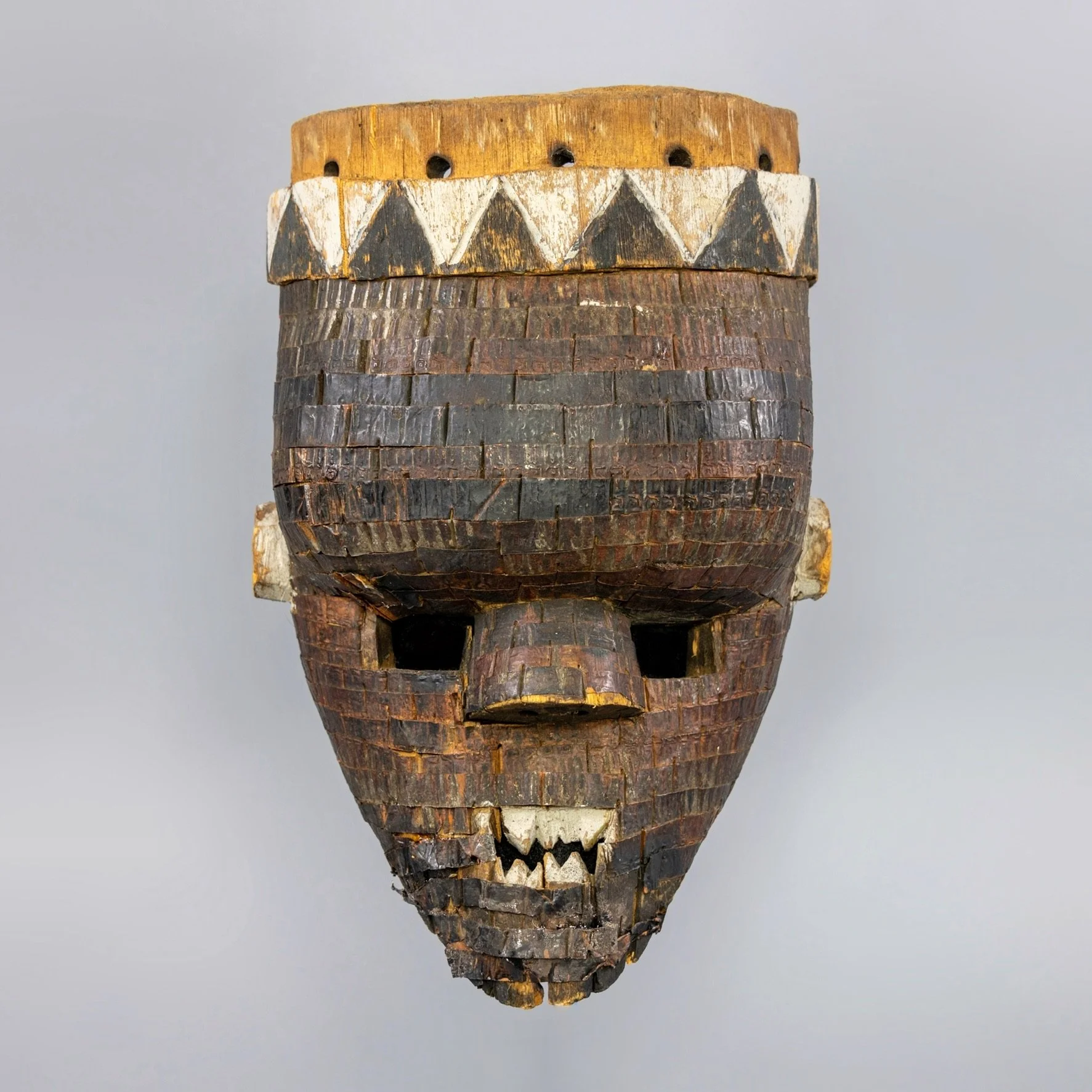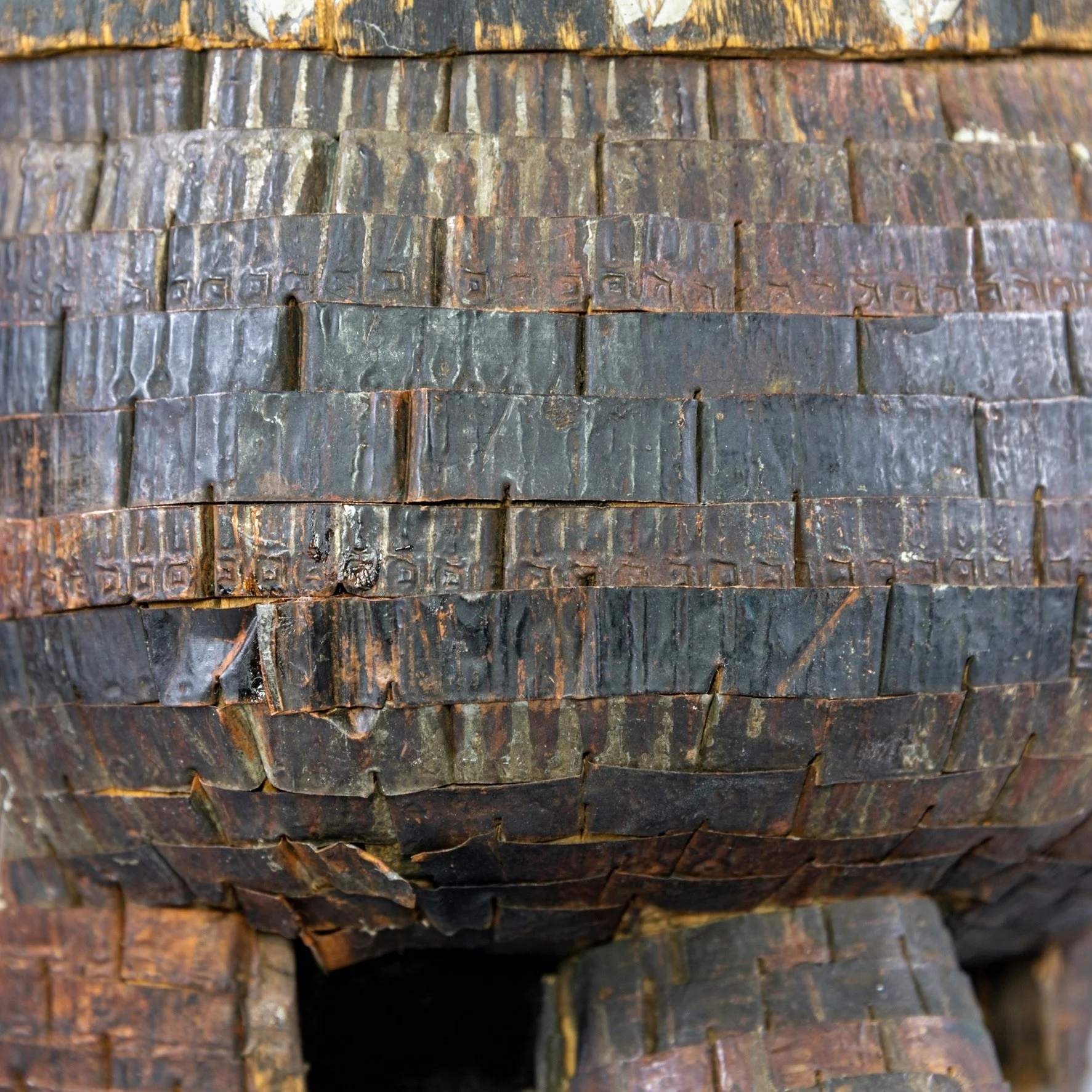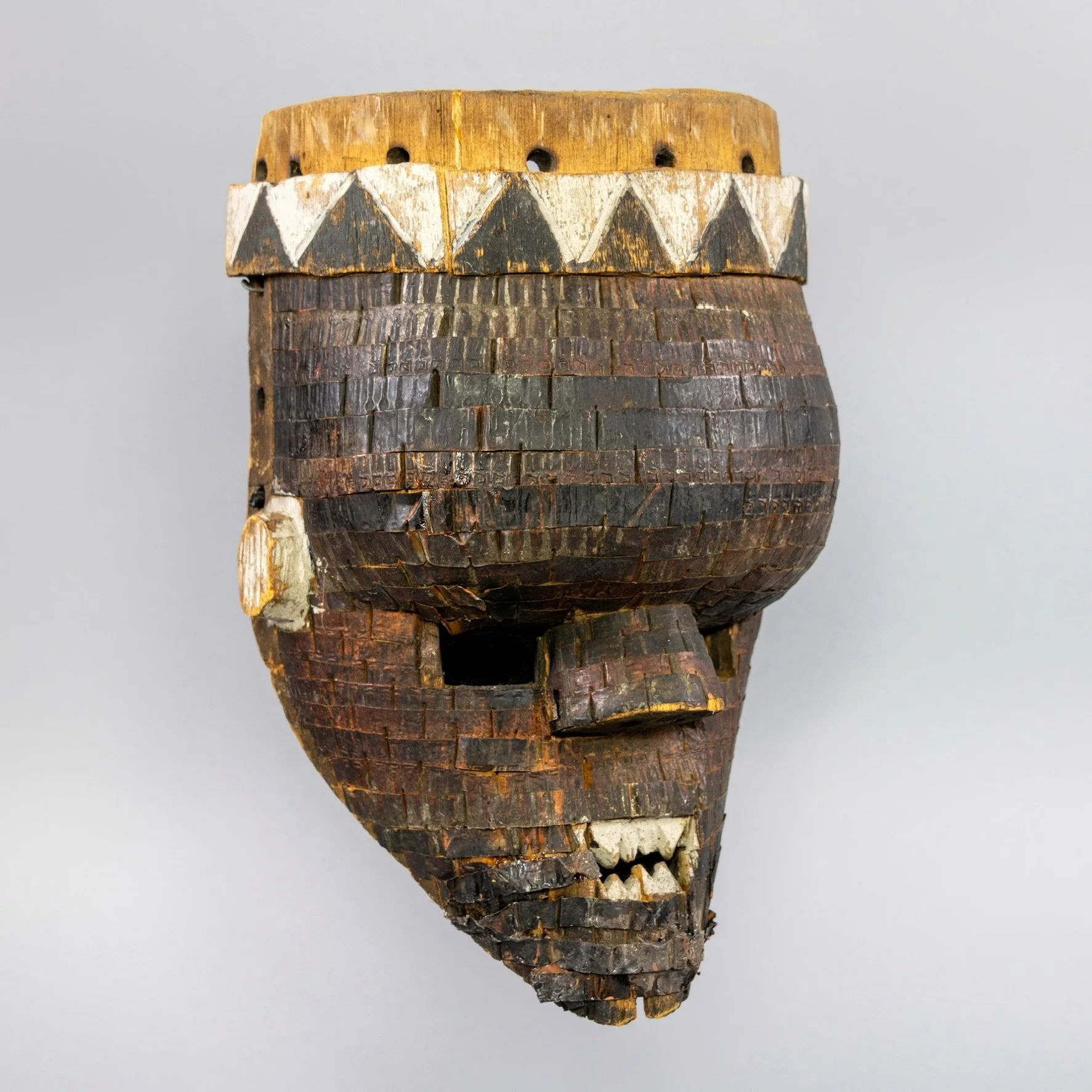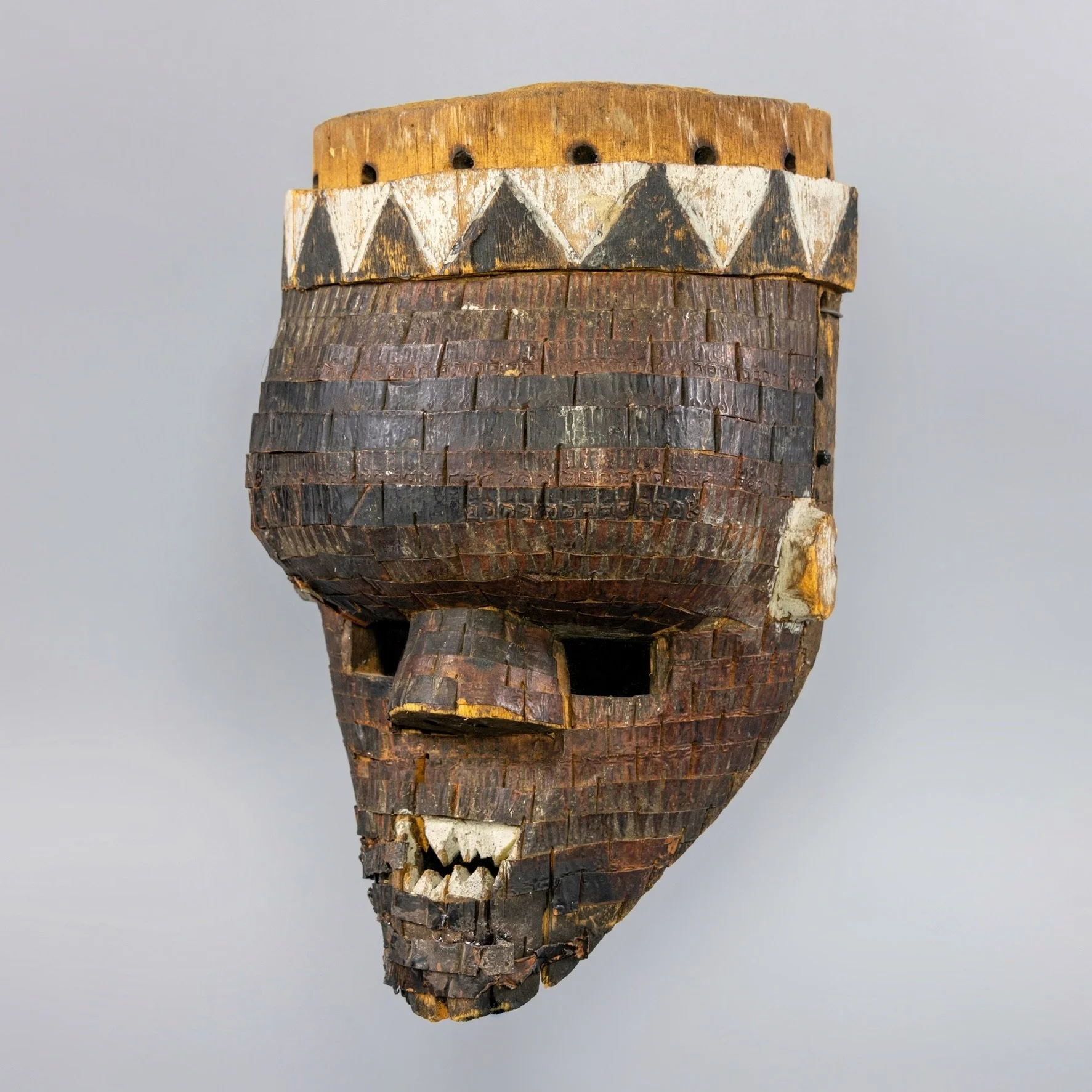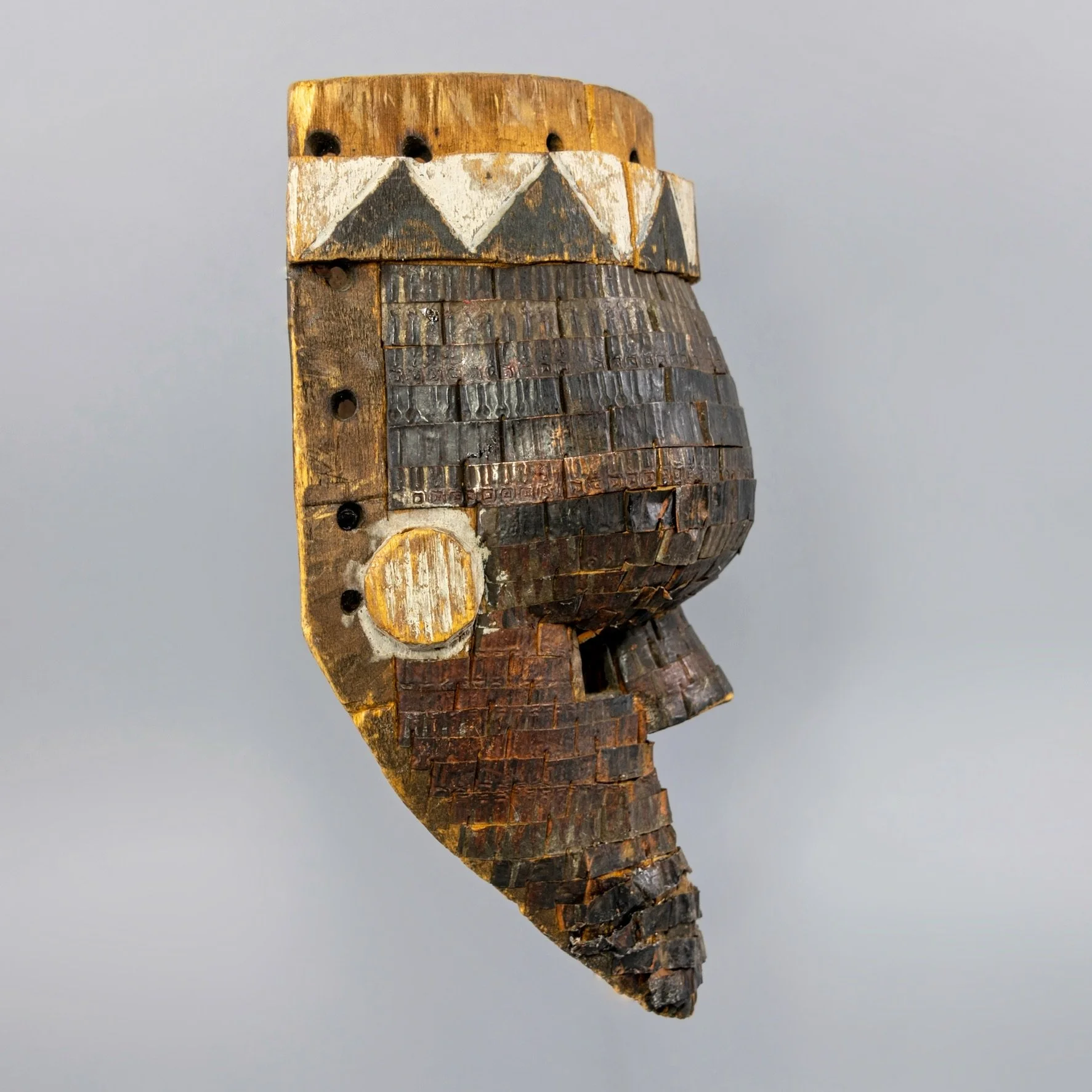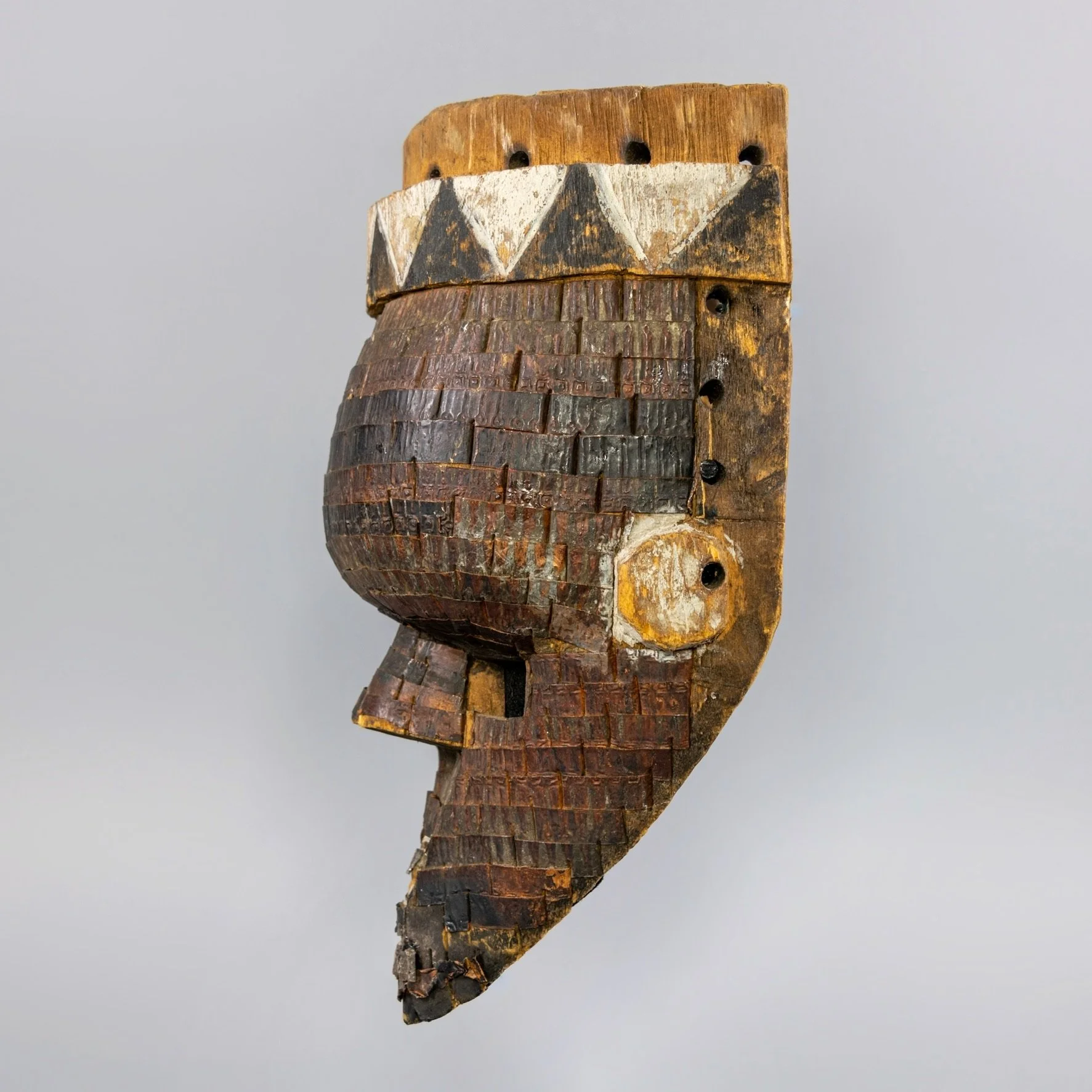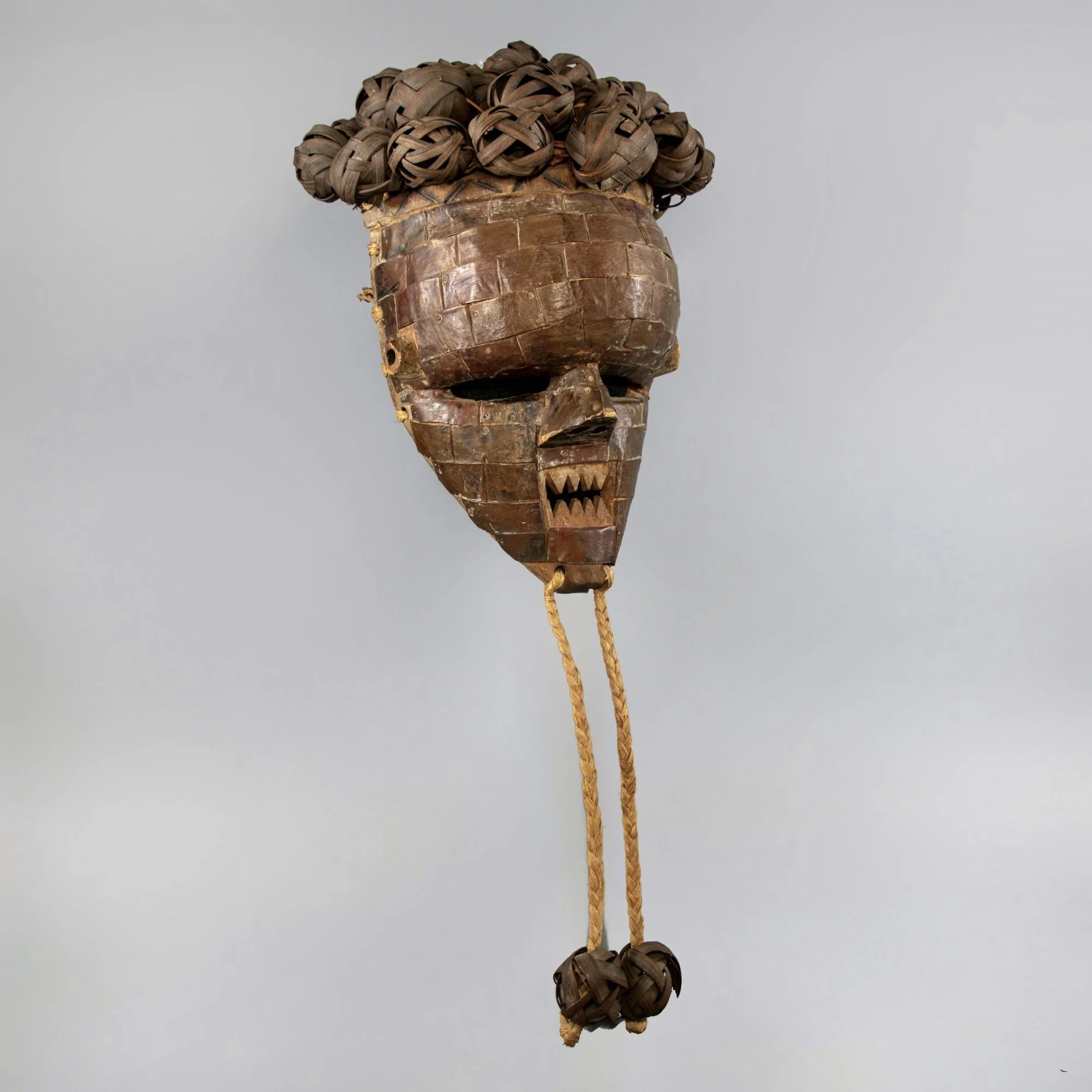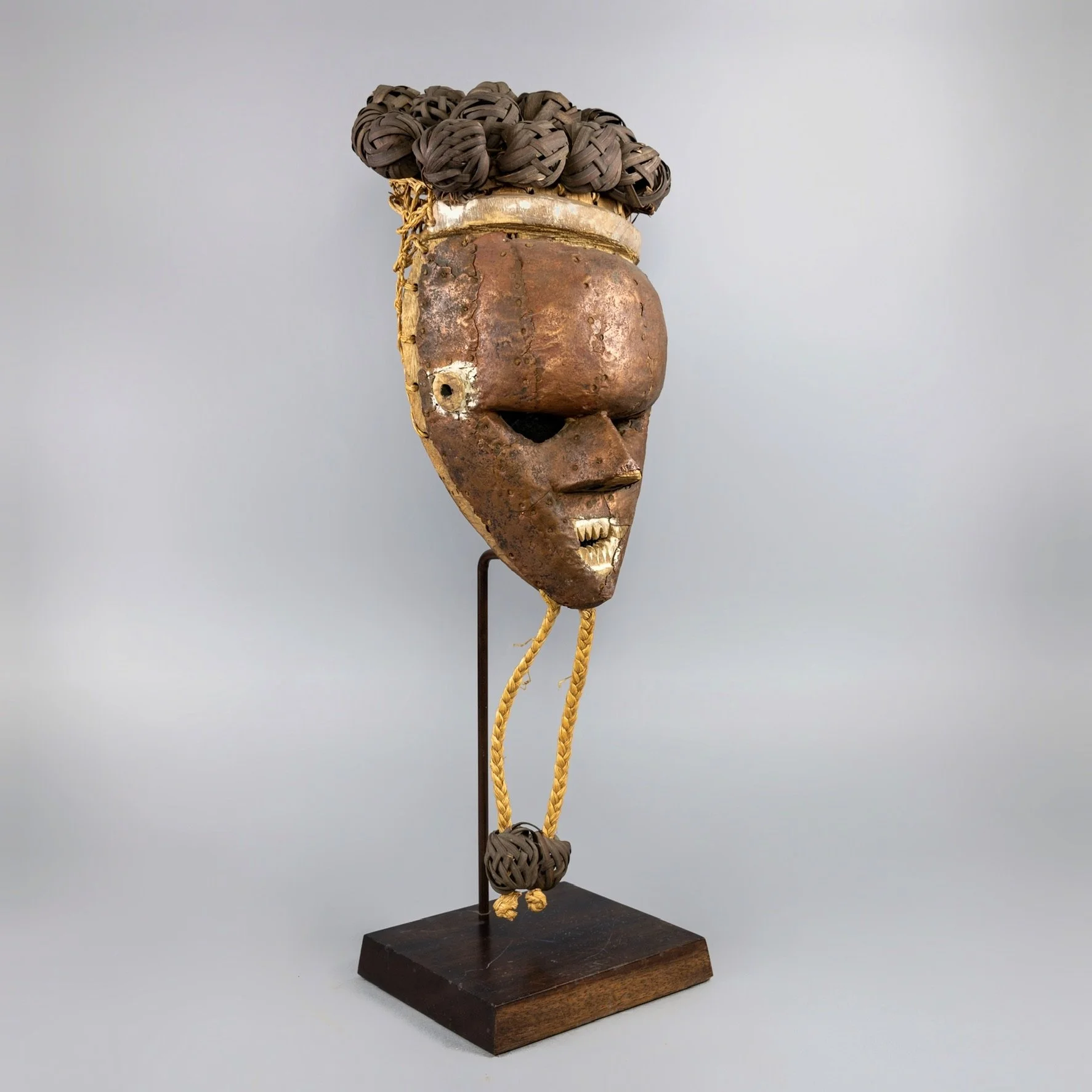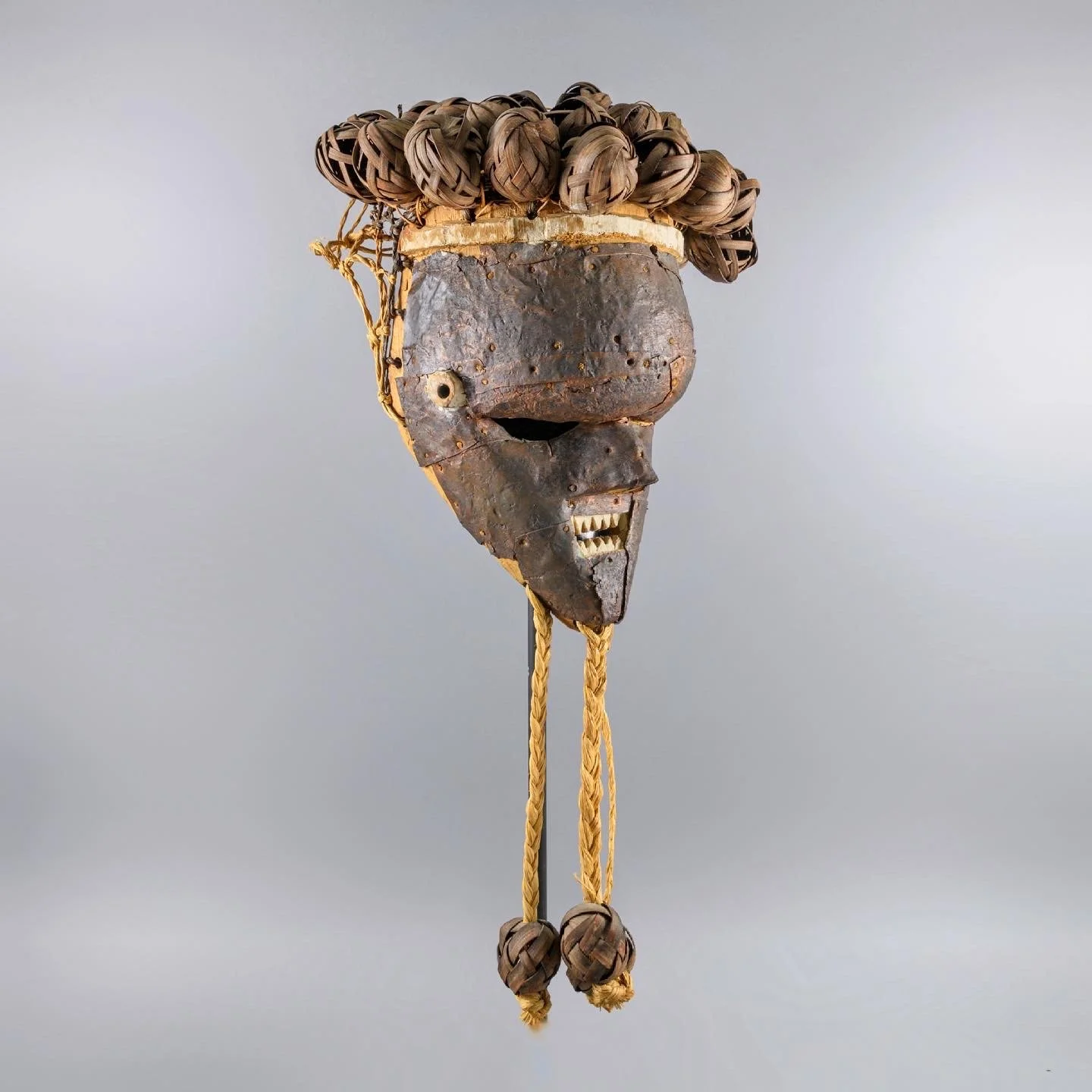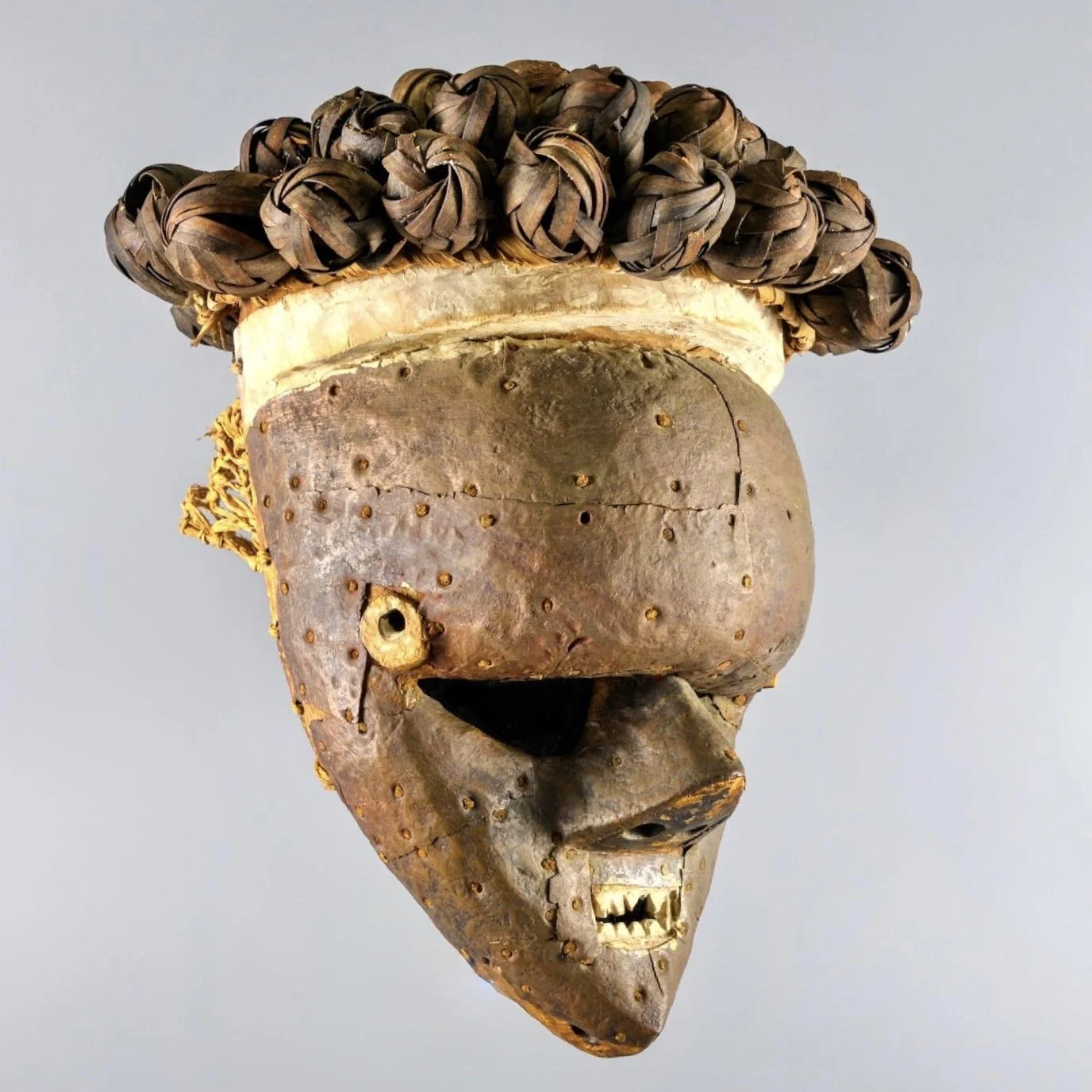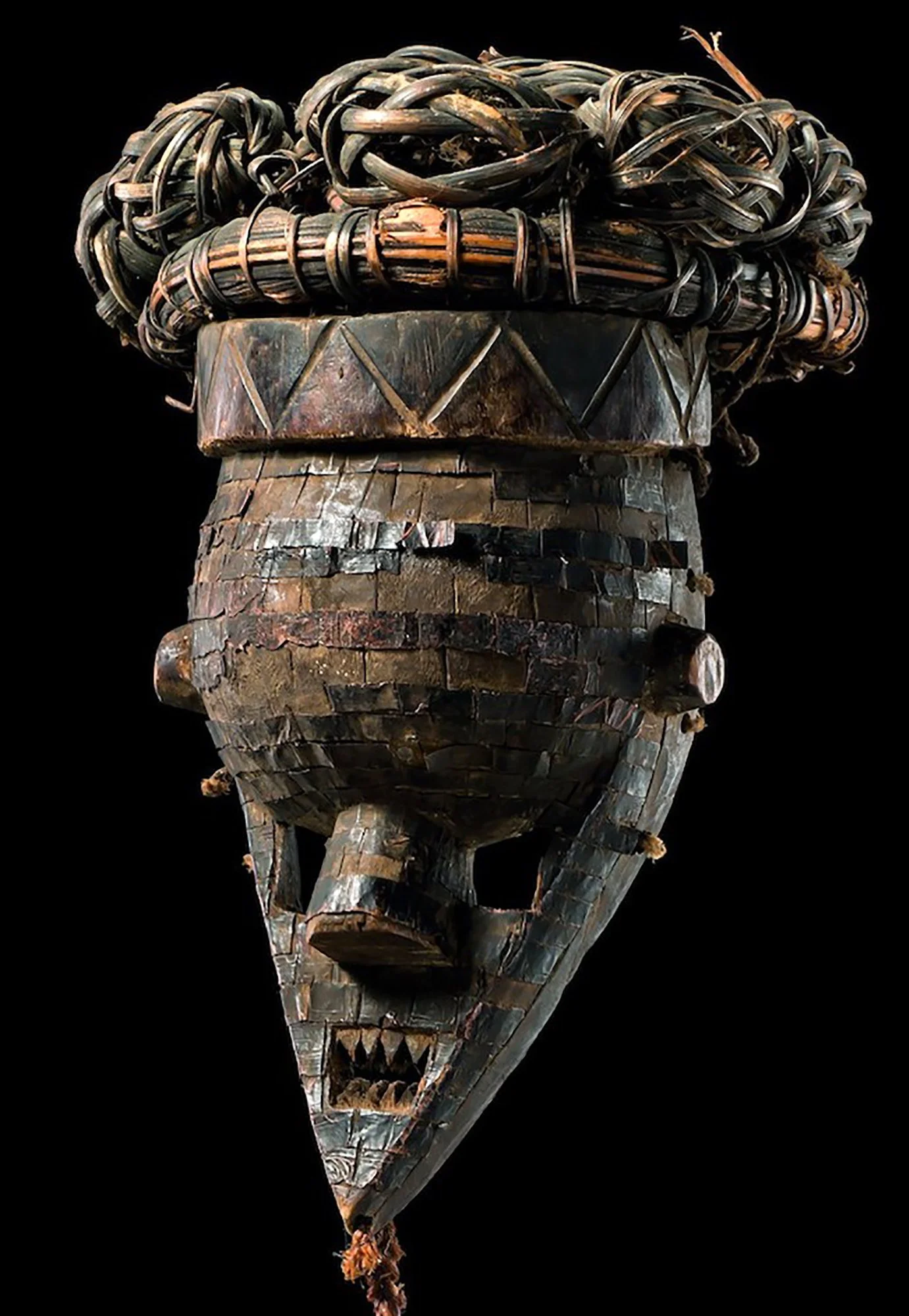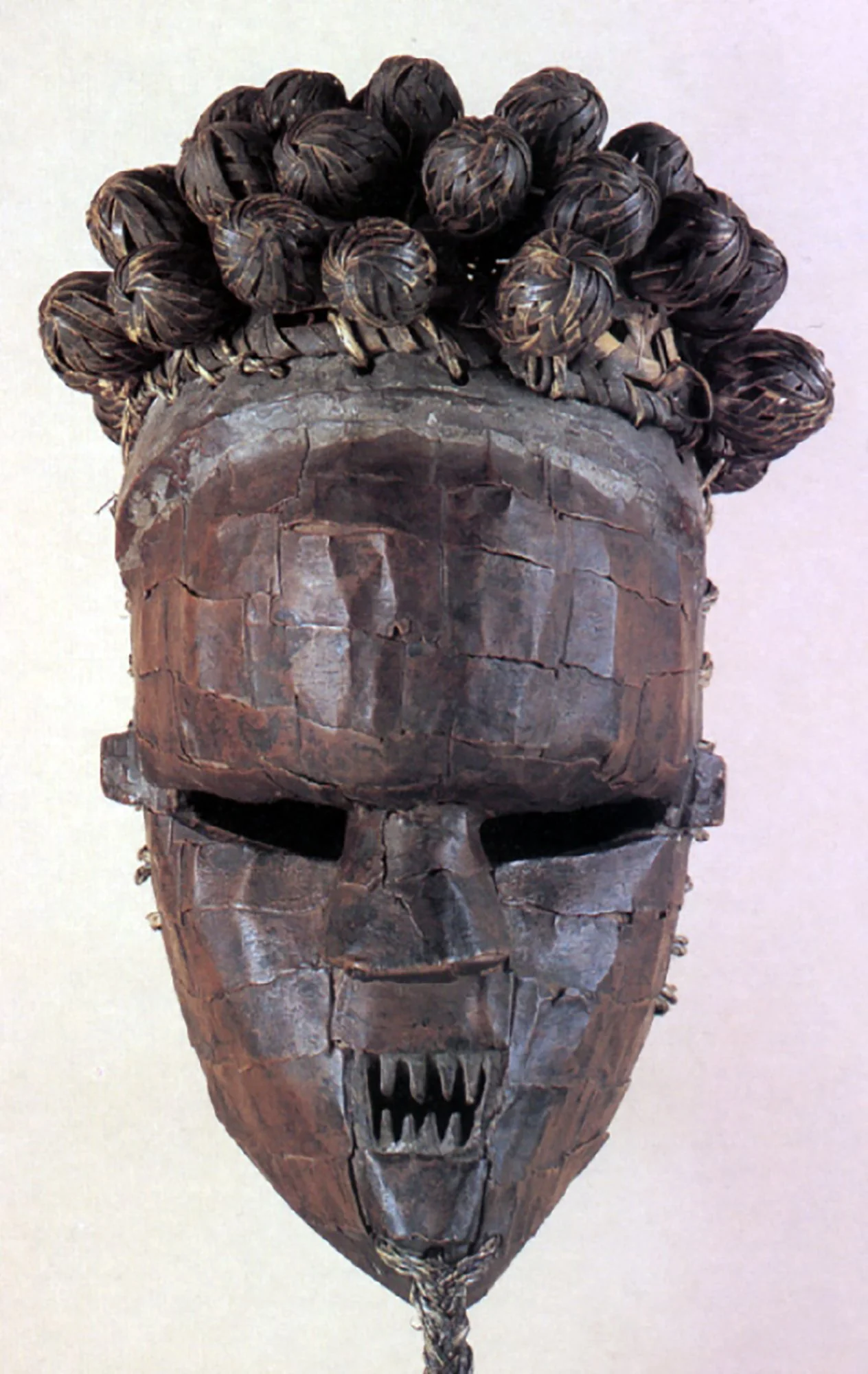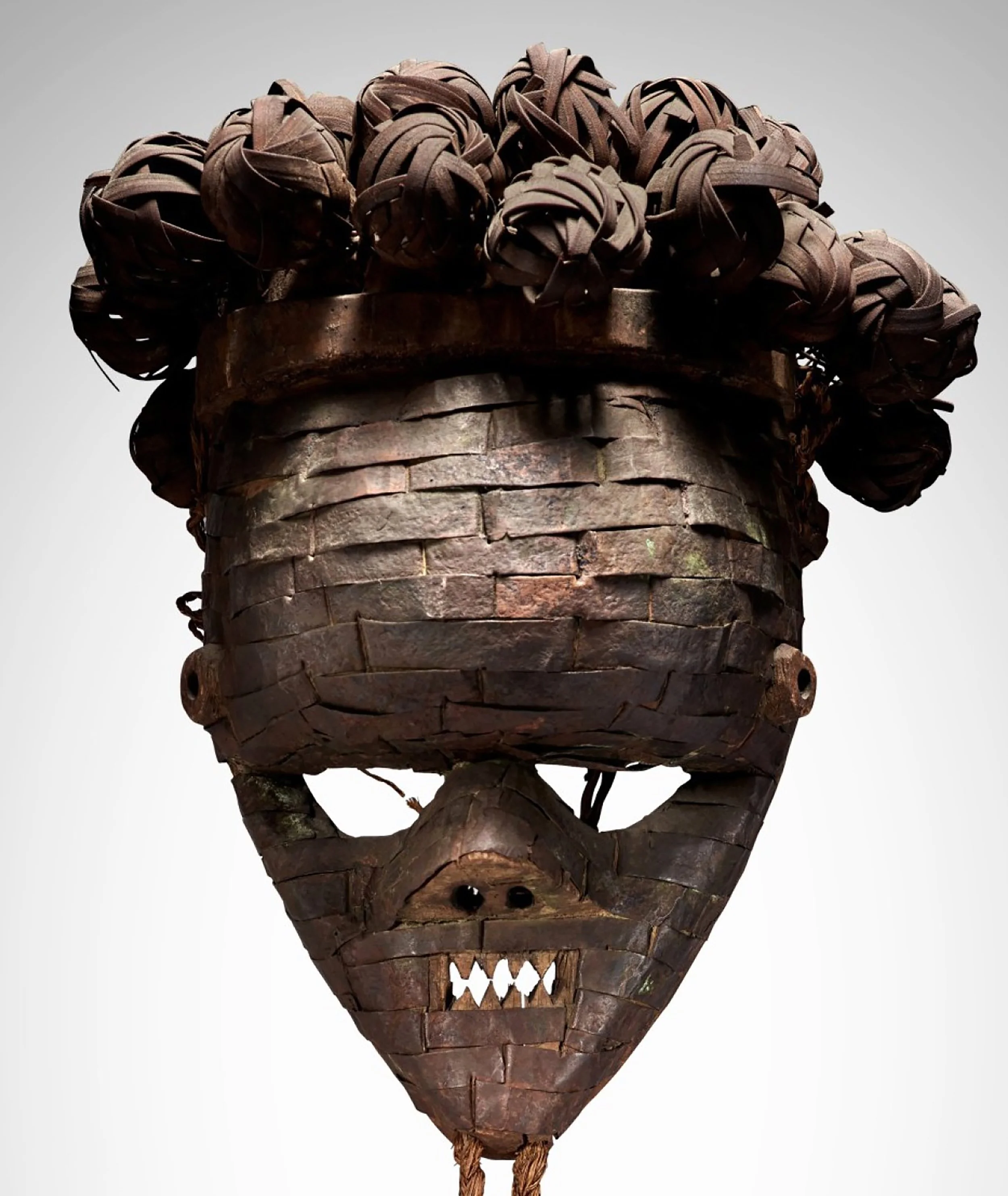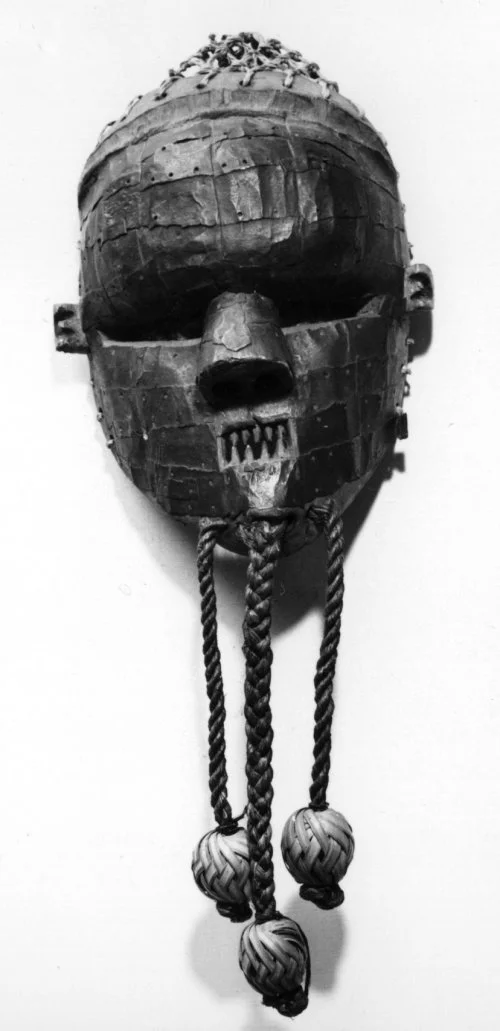Salampasu Mukinka Mask Study
* I use the term “study” lightly *
I don’t think it’s great, but I don’t think it’s fake either. I bought it to study it because it was curious and interesting to me and I wanted to have it in my hands to study in person. I’m providing some of my thoughts and observations after studying it for a while, they can be found below the photos.
I’m providing a group of photos below. Some are against a gray background and some are against a black background. I didn’t provide a photo of the back of the mask, and I know that is usually a crucial viewpoint, but I explain the back of the mask in the text further down. You should be able to click on an image and it will bring up the image viewer.
Most early Mukinka masks have native copper alloy sheets random in shape and size that are usually attached to the mask with wooden pegs and they’re patchworked together on the mask like a puzzle. At some point in their history they also made masks with the copper in horizontal cut strips that were usually fairly thick and rectangular. The horizontal copper alloy strips were also mainly attached with wooden pegs, but sometimes attached when grooves were cut into the wood and then the copper strip ends were bent downward and hammered into the grooves to hold it to the wood. Mukinka masks were mainly only danced at the funerals of important people so they often don’t show a lot of wear. There are some masks with thinner strips of copper on them, like one in the Musée Barbier-Mueller, that appear to be old, but I don’t know when the use of thinner copper strips began. With some Mukinka masks their age is undeniable, while with others it’s hard to gauge except for style, metal type and construction techniques.
According to what I’ve read, imported copper became available to them to potentially use for masks sometime between 1940-50. When imported copper became available it was usually a much thinner grade and it is easy to distinguish between it and the native copper on the earlier ones. This mask has imported copper strips on it that are attached by the groove method I mentioned, and it’s a bit different than most others because some of the metal strips have designs stamped in them which are visible in the detail photo. The metal has an older feel to it in my opinion with an untouched surface. It is not like the thin shiny strips I’ve seen on a lot of later made for the market examples.
The shape of the mask is ok in my opinion. The shape of the eyes on this mask are more square in shape than the normal elongated narrow eyes we’ve come to expect on Salampasu masks. The squared eyes are found on a lot of examples made for the collecting market, but I’ve seen a few masks that have passed through auction houses (Zemanek etc) that have had squared eyes. One thing you’ll see on a lot of made for the collecting market examples after the 70’s is the face shape is very narrow and comes to a very pointy chin, and to me they look very unnatural and are easy to point out.
My experience is that the zig zag pattern is something done a lot on later masks, but it is not usually found on earlier ones although there are examples of masks I think are early ones with the zig zag pattern. Earlier ones almost always have a simple white or plain wood ridge above the forehead. Another thing that is found primarily only on later masks made for the collecting market is a plant fiber ring, sometimes covered with rope, which is attached to the holes in the mask on the rim. A grid is created with the rattan material on the ring and then the rattan balls are attached to the grid. It makes a structure that is a lot easier to attach the rattan balls to the top of the mask than the way it was done on older examples which uses a similar method but doesn't include the large plant fiber ring like this. Older examples sometimes have a circle of the rattan material around the rim which is used as the structure to attach the rattan balls to, but not always. *For full disclosure the mask I am discussing had a plant fiber ring on it which was used to attach the rattan balls to, but I removed it.
The wood on the mask is oxidized and definitely doesn’t have a newer look or feel to it to me. A good visual sampling of the wood is on the top of the rim of the mask and you can see the oxidized surface. The mask cracked in half at some point and was repaired. It cracked on the entire right-hand side from the chin to the top, and whomever repaired it did a bad job with a lot of glue. Fortunately the metal does a decent job of covering up the damage from the front, except for the mouth and chin. The back is a different story because whomever repaired it covered up the repair with something like potassium permanganate to hide the glue, but also brushed it over a lot of the back to make it more uniform. Areas that weren’t covered have the same look and feel of the wood on the top rim, so it’s unfortunate they did that.
Contact with the Salampasu was much later than a lot of their neighbors, partly because they were remote and had a fearsome reputation. Some of the earlier documented mutual contact between the Salampasu and Belgians was in the mid-20s by Alfred Jobaert whose accounts included observations on Salampasu customs. The first missionary station was set up in 1929 with several others to follow in the 30s. There were attempts to document the culture and their traditions in the 30s and 50s, but much of that documentation didn’t corelate the masks with the traditions. The only Westerner to do extensive field research was the late William Pruitt who collected oral traditions between September 1966 and December 1967, and his 1973 Ph.D. dissertation is probably the most extensive information put together on the Salampasu. It has been stated that in the early 60s the Salampasu destroyed many of their masks and disbanded one of the main associations that gave them importance. Pruitt states that these actions were intended to reinforce the authority of the new chiefs and were “symbolic of a determined effort to move into contemporary life.” Cornet reported in 1975, however, that the Salampasu had since “increased their production of masks in order to supply growing demand.” Although the source of that demand is not specified, it seems certain that it was, and still is, the European and American market.
In talking with a man who lived amongst the Salampasu for a few years in the early 70s he said that owners of masks were often reluctant to part with them, but carvers were happy to sell masks they were making for use within the culture and sell them to outsiders. He said this wasn’t always the case as far as the owners not wanting to part with their masks, but it was common. There were definitely old masks collected between the 30s and 70s, but there was also definitely a defined market for ones made by carvers that produced masks for use who also sold to outsiders.
What I’ve been trying to do is gauge this mask’s place in the timeline of the production of Mukinka masks. This mask has some good qualities to it in my opinion, although I like it less than the others I have. When I don’t have any good collection history and the object doesn’t have enough solid qualities to make me think it is authentic beyond a doubt I’m inclined to fall back on my default position which is that the mask was most likely made for the collecting market. I think it was made by a Salampasu carver and I’d say it was post-1950, but I can’t definitively say if it was used in culture since the person who repaired the back ruined the back of the mask.
RAND
4 Mukinka masks in my collection
Examples
I’m sharing these examples not for direct comparison to the mask I have, but instead to show some examples with rectangular copper strips applied to the masks. The 1st mask has the same metal with the imprinted designs as the metal that is on my mask. The Barbier-Meuller example seems to be one of the older examples I’ve found with the thin horizontal copper strips, but I don’t know the collection history of the mask. The Sotheby’s example, the Galerie Lemaire example and the one that was published in African Arts magazine are examples of the types of copper alloy usually found on these masks with the thinner horizontal strips, as well as the style we normally see.
George Meister 1997 - Neumeister 2008
Thomas Lother & Volker Thomas, Nürnberg - Zemanek - Adrian Schlag
African Arts magazine 1988
Barbier-Mueller Museum
Sothebys 2021
Galerie Lemaire, Amsterdam


